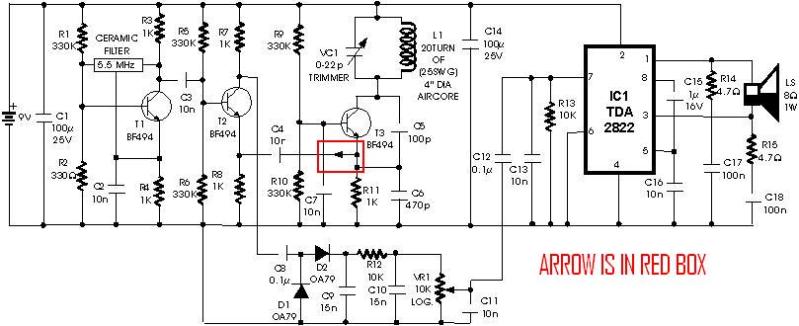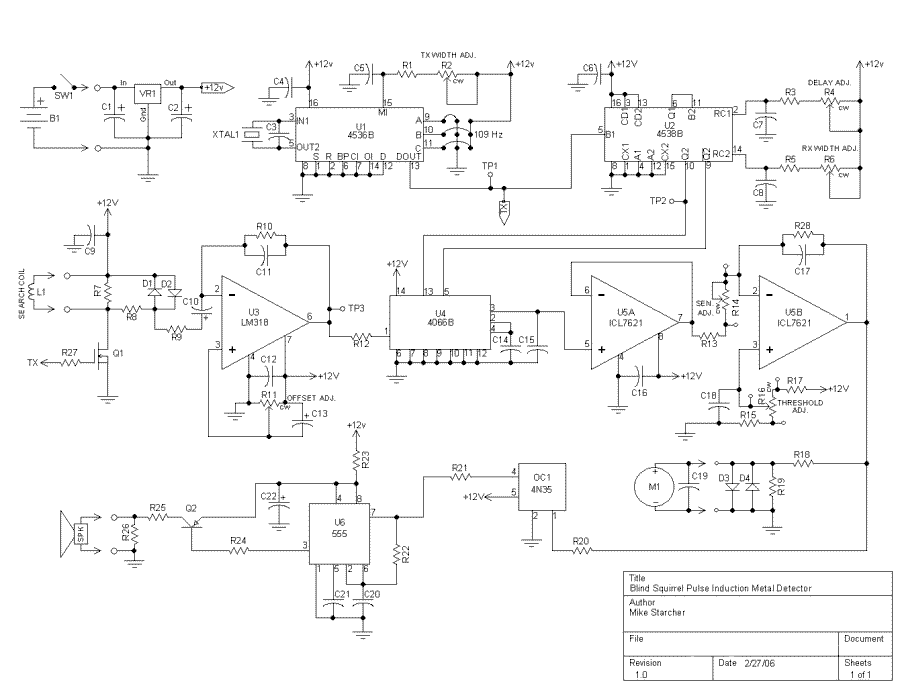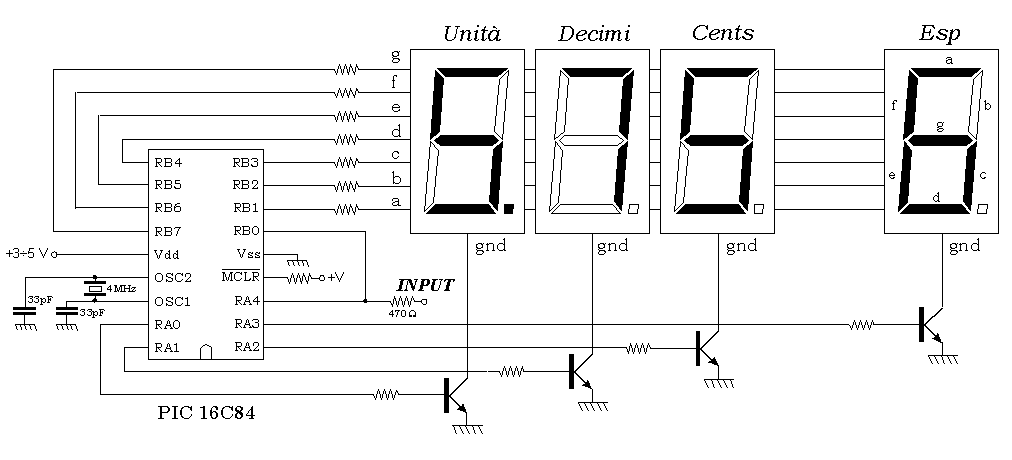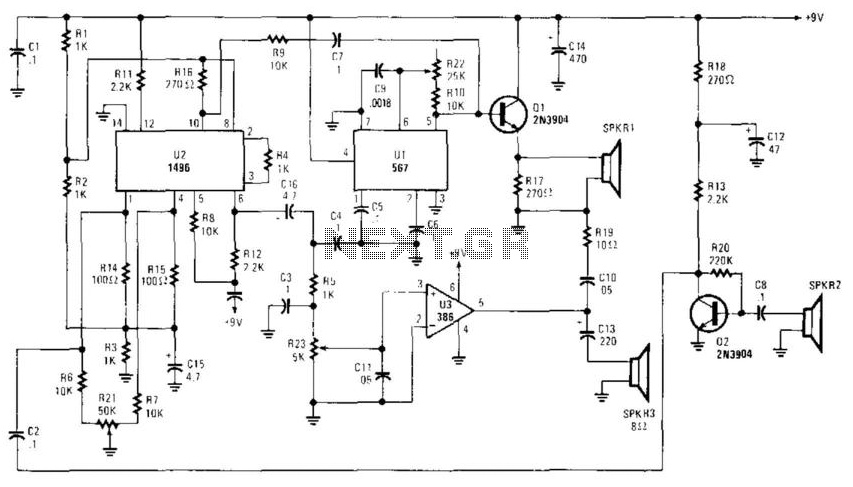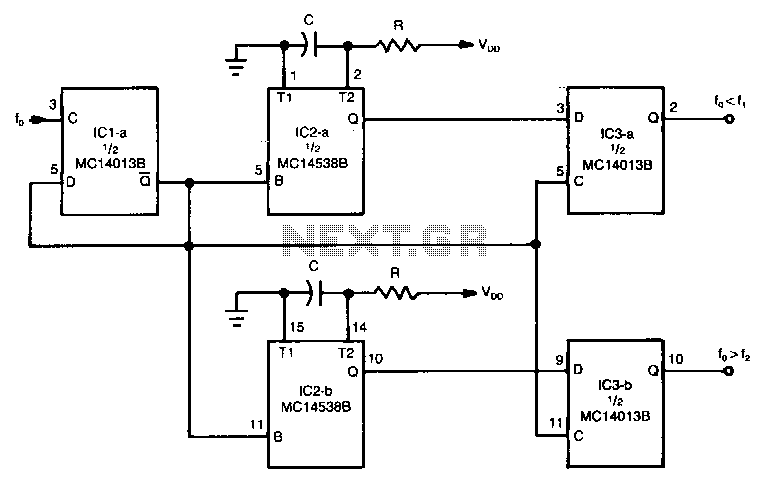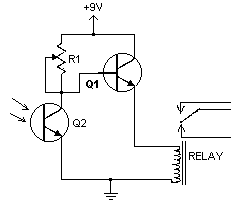
Metal Detector
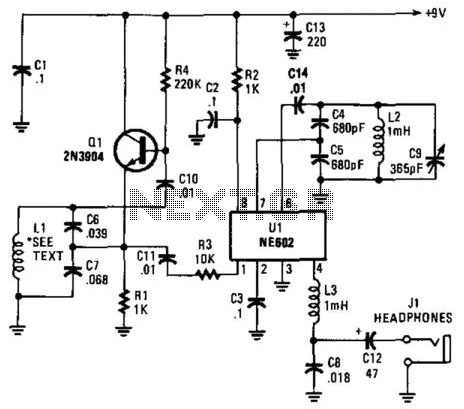
An NE602 functions as a heterodyne detector, while Q1 serves as a sense oscillator. When L1 is brought near metal, it induces a change in inductance, resulting in a shift in the resonant frequency of L1 and C6/C7. L1 consists of 5 turns of #20 wire wound on a 9-inch diameter wood or plastic form.
The NE602 integrated circuit is designed for use in radio frequency applications, specifically as a mixer and detector. In this configuration, it operates as a heterodyne detector, which is crucial for demodulating signals in various communication systems. The heterodyne process involves mixing the incoming radio frequency signal with a local oscillator signal generated by Q1, allowing for the extraction of the desired information from the modulated carrier wave.
The inductor L1, constructed with 5 turns of #20 gauge wire on a 9-inch diameter form, plays a pivotal role in determining the resonant frequency of the circuit. The inductance of L1 can be altered when it is brought into proximity with metallic objects, which affects the overall inductive properties of the coil. This change in inductance shifts the resonant frequency of the LC circuit formed by L1 and the capacitors C6 and C7. The resonant frequency is crucial as it defines the operational bandwidth of the detector and the sensitivity to incoming signals.
Capacitors C6 and C7 are typically chosen to complement the inductance of L1, forming a tank circuit that resonates at the desired frequency. The values of these capacitors need to be selected based on the target frequency of operation, ensuring that the circuit remains responsive to the signals of interest while minimizing noise and interference.
In summary, this circuit configuration utilizing the NE602 as a heterodyne detector, along with Q1 as a sense oscillator and the adjustable inductor L1, provides a versatile platform for signal detection and processing in RF applications. The design allows for the dynamic adjustment of the resonant frequency, enhancing the circuit's adaptability to varying signal conditions. An NE602 acts as a heterodyne detector and Ql as a sense oscillator. When Ll is brought near metal, it causes a charge in lo op inductance, shifting the resonant frequency of Ll C6/C7. Ll is 5 turns #20 wire on a 9" diameter wood or plastic form.
The NE602 integrated circuit is designed for use in radio frequency applications, specifically as a mixer and detector. In this configuration, it operates as a heterodyne detector, which is crucial for demodulating signals in various communication systems. The heterodyne process involves mixing the incoming radio frequency signal with a local oscillator signal generated by Q1, allowing for the extraction of the desired information from the modulated carrier wave.
The inductor L1, constructed with 5 turns of #20 gauge wire on a 9-inch diameter form, plays a pivotal role in determining the resonant frequency of the circuit. The inductance of L1 can be altered when it is brought into proximity with metallic objects, which affects the overall inductive properties of the coil. This change in inductance shifts the resonant frequency of the LC circuit formed by L1 and the capacitors C6 and C7. The resonant frequency is crucial as it defines the operational bandwidth of the detector and the sensitivity to incoming signals.
Capacitors C6 and C7 are typically chosen to complement the inductance of L1, forming a tank circuit that resonates at the desired frequency. The values of these capacitors need to be selected based on the target frequency of operation, ensuring that the circuit remains responsive to the signals of interest while minimizing noise and interference.
In summary, this circuit configuration utilizing the NE602 as a heterodyne detector, along with Q1 as a sense oscillator and the adjustable inductor L1, provides a versatile platform for signal detection and processing in RF applications. The design allows for the dynamic adjustment of the resonant frequency, enhancing the circuit's adaptability to varying signal conditions. An NE602 acts as a heterodyne detector and Ql as a sense oscillator. When Ll is brought near metal, it causes a charge in lo op inductance, shifting the resonant frequency of Ll C6/C7. Ll is 5 turns #20 wire on a 9" diameter wood or plastic form.
